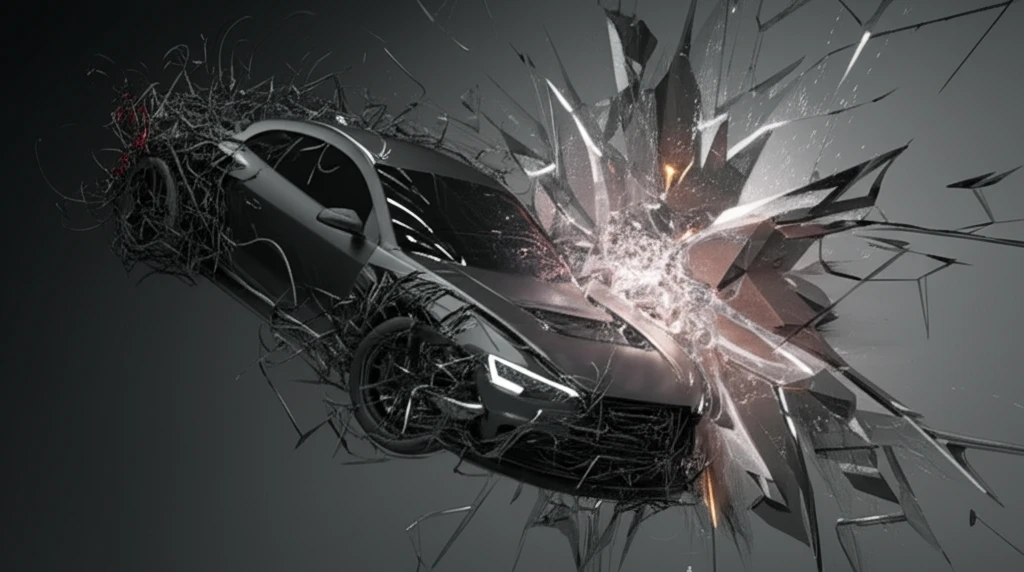
Crash Course: How New Materials are Revolutionizing Car Safety
"Explore how carbon fiber and aluminum composites are engineered to enhance vehicle resilience and protect passengers in collisions."
In today's automotive industry, safety is more than just a feature—it's a core principle guiding design and engineering. Amidst the ever-increasing flow of traffic, the risk of accidents is an unavoidable concern for drivers and passengers alike. Vehicle pileups, in particular, present a severe threat, turning everyday commutes into potential high-impact scenarios. During these events, a vehicle’s front and back ends are subjected to multiple impacts, making the energy absorption capabilities of its materials crucial for protecting those inside.
Traditionally, metals have been the go-to material for car construction. However, a new wave of advanced materials, including carbon fiber reinforced plastics (CFRP) and aluminum composites, are making their way into the automotive sector. These materials promise not only to reduce vehicle weight but also to enhance safety by improving how cars respond in crash situations. Unlike their heavier counterparts, CFRP and aluminum composites are designed to absorb and dissipate energy more effectively, potentially reducing the severity of injuries during collisions.
This article delves into the impact behavior and residual properties of CFRP and aluminum tubes under multiple impacts, shedding light on why these materials are becoming increasingly vital in automotive safety. Join us as we explore how these advancements could shape the future of vehicle engineering and, ultimately, save lives.
Why Choose Composites Over Traditional Metals?

Traditional materials like steel, while strong, don't always offer the best energy absorption relative to their weight. This is where CFRP and aluminum composites shine. CFRP is incredibly strong for its weight, meaning vehicles can be lighter without sacrificing structural integrity. Lighter vehicles can also translate to better fuel efficiency and reduced emissions, aligning with environmental goals.
- Lightweight Design: Carbon fiber and aluminum reduce vehicle weight, improving fuel efficiency.
- Energy Absorption: Composites deform to absorb crash energy, enhancing safety.
- Strength-to-Weight Ratio: High strength at a lower weight increases vehicle performance and safety.
The Road Ahead: Innovations in Automotive Safety
The future of car safety is rapidly evolving, driven by innovations in material science. As research continues and manufacturing techniques advance, we can expect to see more CFRP and aluminum composites in vehicle design, improving crash protection and overall vehicle performance. Embracing these materials means embracing a future where car accidents are more survivable, and journeys are safer for everyone.
